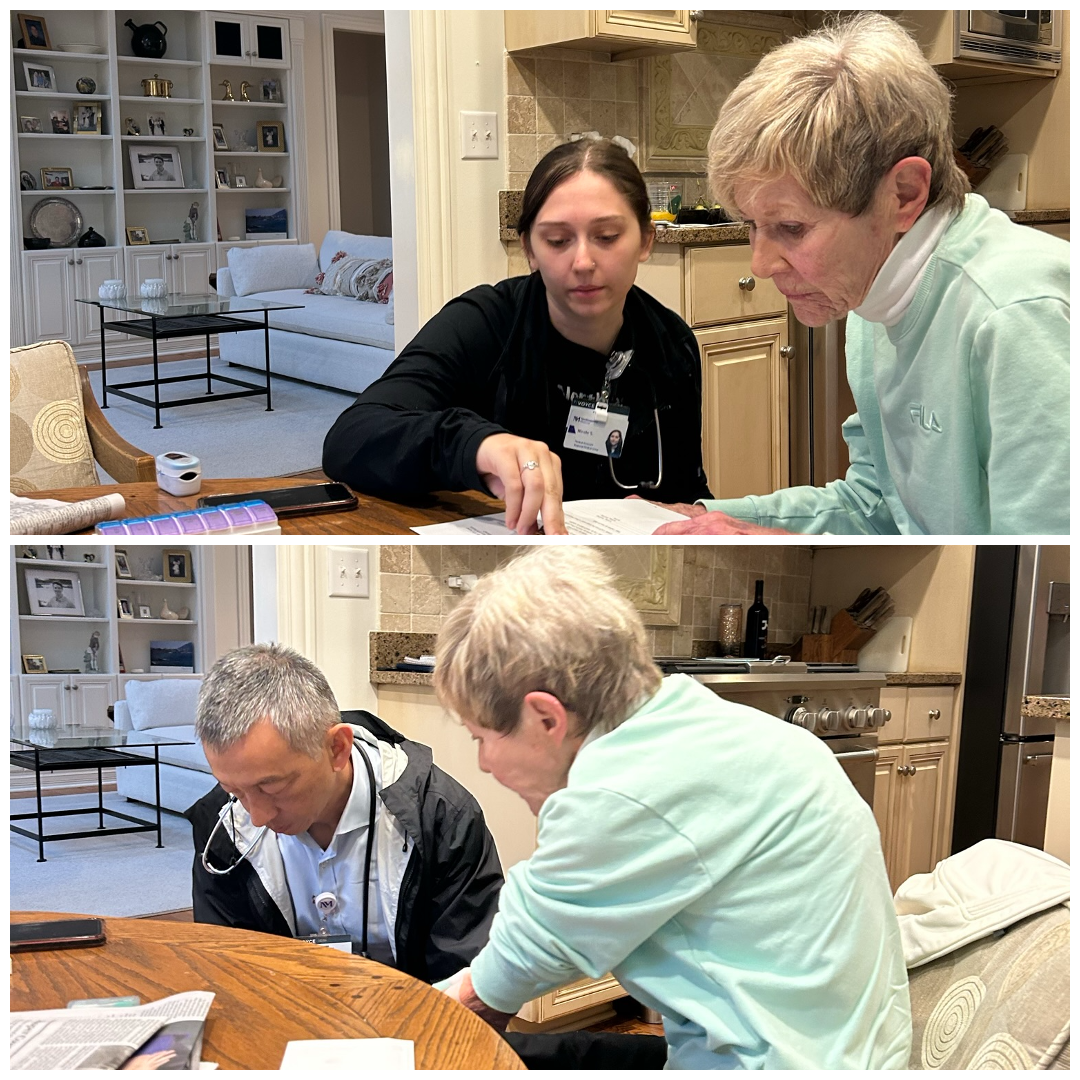The Transformative Impact of House Calls: Part II

Date: 4|4|2024
Blair Findlay, HCCI Development Associate, rode along with Dr. Paul Chiang, HCCI’s Senior Medical and Practice Advisor, for a day of house calls. Dr. Chiang also serves as Medical Director for Northwestern Medicine HomeCare Physicians. In this series, Findlay shares her experiences and insights from that day. Read part I here.
“Hospice” can be a scary word. My impression of hospice care, for example, came from watching my grandpa slowly die in a hospital bed that was in his living room when I was eight years old. So, when Dr. Chiang told me our first patient of the day, Betty, had “graduated from hospice last year,” I was confused.
“Betty” (the patient’s name has been changed for privacy), 87, reminded me so much of my grandmother. She opened the door to Dr. Chiang, his medical assistant, Nicole, and me with a spring in her step. I was shocked that this was the same woman Dr. Chiang had said was receiving hospice care a year ago. He even exclaimed when he saw her, “My mind is going back to the first visit… look at you now, I’m so happy for you!”
Betty is happy, too. We talked about her experience with home-based primary care while Nicole and Dr. Chiang took her vitals and began their visit. Betty noted that her desire for the rest of her days is “quality of life, not quantity.”
Despite her struggles last year, Betty is doing great—she is able to live alone but doesn’t drive, so going to an in-office appointment would have been a logistical challenge for her and taken all day. During the 30 or so minutes we spent with her in her home, she sang the praises of Dr. Chiang and said that his visits are the “bright spot in her day.”
Betty, like so many patients, didn’t know that home-based primary care was a possibility for her. “Since I had gotten better, I didn’t know if you could see me [at home],” she told Dr. Chiang. She also didn’t realize that she didn’t have to “qualify” to receive a home visit. (There are over 7 million homebound and home-limited patients in the U.S., yet only 15% of those who could benefit from home-based primary care receive it.)
Meeting Betty not only reminded me how important this work is, but how vital it is that those who need it know it’s available to them and how to access it.
It’s easy to see the impact of house calls after a day with Dr. Chiang. Along with being a skilled provider, he makes sure to know details about the patient and their families, and other key information. For Dr. Chiang, house calls are so much more than just a medical visit. Modern-day house calls are a beacon of compassionate and tailored medical care that transcends a traditional healthcare setting.
Share and Get Involved:
• Interested in having your own house call shadowing experience? Contact our development team to learn more.
• Know someone in need of home-based primary care? Check the American Academy of Home Care Medicine’s House Call Finder to locate home-based care providers in your area.
• Help us spread awareness of the importance and value of house calls by sharing these resources.
• Refer healthcare providers and practices to HCCI’s website.
• Write your local representative about healthcare policy that supports house calls (be sure to include a personal story about your experience with house calls or your need for them).
• Share your story about why you support HCCI and our mission.